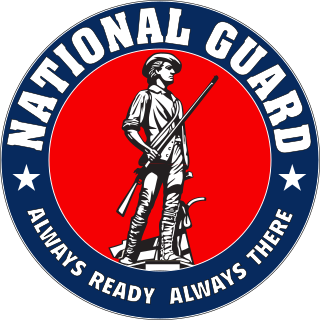
The United States National Guard is part of the reserve components of the United States Army and the United States Air Force. It is a military reserve force composed of National Guard military members or units of each state and the territories of Guam, the Virgin Islands, and Puerto Rico, and the District of Columbia, for a total of 54 separate organizations. All members of the National Guard of the United States are also members of the Organized Militia of the United States as defined by 10 U.S.C. § 246. National Guard units are under the dual control of the state governments and the federal government.

State defense forces (SDF); also known as state military, state military force(s), state guards, state militias, or state military reserves) in the United States are military units that operate under the sole authority of a state government. State defense forces are authorized by state and federal law and are under the command of the governor of each state.

A naval militia in the United States is a reserve military organization administered under the authority of a state government. It is often composed of Navy, Marine Corps, and Coast Guard reservists, retirees and volunteers. They are distinguishable from the U.S. Coast Guard Auxiliary which is a federally chartered civilian volunteer component of the U.S. Coast Guard and falls under the command of the Commandant of the Coast Guard through the Chief Director of the Auxiliary, and the United States Maritime Service and United States Merchant Marine, both of which are federal maritime services.

The Virginia Defense Force (VDF) is the official state defense force of Virginia, one of the three components of Virginia's state military along with the Virginia National Guard which includes the Virginia Army National Guard, the Virginia Air National Guard, and the unorganized militia. As of 2019, the VDF has approximately 250 soldiers. The VDF is the descendant of the Virginia State Guard, the Virginia Regiment, and ultimately the Colonial Virginia militia of the Virginia Colony.

The Georgia State Defense Force is an unpaid, volunteer component of the Georgia Department of Defense, serving in support of the national and state constitutions under direction of the governor and the adjutant general of Georgia. As a State Defense Force, members serve alongside the Georgia Army National Guard and the Georgia Air National Guard.

The Minnesota National Guard is the National Guard of the state of Minnesota, United States. It has more than 13,000 soldiers and airmen, serving in 61 communities across the state.

The Pennsylvania Army National Guard, abbreviated PAARNG, is part of the United States Army National Guard and is based in the U.S. Commonwealth of Pennsylvania. Together with the Pennsylvania Air National Guard, it is directed by the Pennsylvania Department of Military and Veterans Affairs. The PAARNG maintains 124 armories and is present in 87 communities across the Commonwealth.

The Wisconsin State Defense Force (WSDF) is the currently inactive state defense force of the State of Wisconsin authorized by Wisconsin law. As a state defense force, the Wisconsin State Defense Force, alongside the Wisconsin National Guard, is organized under the Wisconsin Department of Military Affairs as a part of the military forces of Wisconsin. However, unlike the National Guard, the State Defense Force is a purely state-controlled organization and cannot be deployed outside the state of Wisconsin. When any part of the Wisconsin National Guard is called into service of the United States, the adjutant general may recruit volunteers to the WSDF to serve within the borders of Wisconsin.
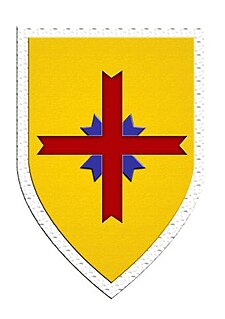
The Puerto Rico State Guard (PRSG) —Spanish: Guardia Estatal de Puerto Rico— is the state defense force of Puerto Rico that operates under the sole authority of the governor of Puerto Rico who, in turn, delegates such authority to the Puerto Rico Adjutant General. The Guard's secondary purpose is to assume the state mission of the Puerto Rico National Guard in the event that the National Guard is mobilized. The first incarnation of the PRSG was created in 1941 in response to World War II and it disbanded in 1946. The PRSG is one of the few state defense forces of the United States that has an air division.

The Tennessee State Guard (TNSG) is the state defense force of the state of Tennessee. The TNSG is organized as an all-volunteer military reserve force whose members drill once per month unless called to active duty. The TNSG is a branch of the Tennessee Military Department, alongside the Tennessee Army National Guard, the Tennessee Air National Guard, and the Tennessee Emergency Management Agency. The State Guard acts as a force multiplier for the state's National Guard. As a state defense force, the Tennessee State Guard cannot be federalized, and is not deployed outside the borders of Tennessee, as it is a purely state-level unit. It answers solely to the Governor of Tennessee, unlike the dual federal and state controlled National Guard. The creation of a state military force is recognized under Tennessee Code Annotated 58-1-401.
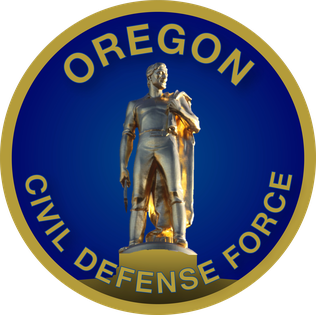
The Oregon Civil Defense Force (ORCDF), formerly known as the Oregon State Defense Force, is the official state defense force of Oregon and one of the three components of Oregon State's organized militia, with Oregon's Army and Air National Guard (ORNG) making up the other two. It serves as a state-level military and emergency services reserve force.
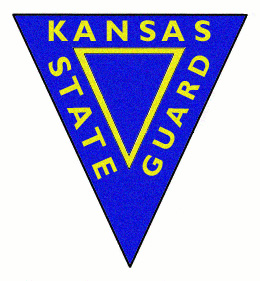
The Kansas State Guard was the official state defense force of the state of Kansas during each of the world wars. The unit was first created during World War I, and was later reactivated during World War II. When the Kansas National Guard was federalized and deployed during each of the world wars, the state of Kansas was forced to raise and maintain its own military force in order to protect against saboteurs, quell riots, and perform other duties which would normally fall to the National Guard. Unlike the National Guard, which could be federalized and deployed abroad, the State Guard was funded and equipped solely by the state and as such was immune to deployment. The Kansas State Guard is authorized under Kansas law. In 2007, the Kansas Legislature considered a bill which would create a modern Kansas State Defense Force. The bill did not pass.

The Pennsylvania State Guard is the currently inactive official state defense force of the state of Pennsylvania, which was active during World War II and the Korean War. The unit was organized as a home guard composed of volunteers who were trained and organized as parallel to the state’s National Guard. As a part of Pennsylvania's official militia, the Pennsylvania State Guard was trained, organized, and funded by the state of Pennsylvania, answered to the governor, and could not be federalized or deployed abroad.
The Hawaii Territorial Guard was the state defense force of Hawaii during World War II. As a result of the National Guard of Hawaii being federalized for the duration of the war, the Hawaii Territorial Guard was created to serve as the stateside replacement for the National Guard. During the war, it was the sole military force available to the Governor of Hawaii as its captain general to use in defense of the state. Unlike the National Guard, as a state defense force, the Hawaii Territorial Guard was not subject to federalization or deployment outside of the borders of Hawaii, but rather answered only to the governor.
The Nebraska State Guard (NSG) is the currently inactive state defense force of the state of Nebraska, which was activated during both World War II and the Vietnam War. As a state defense force, the NSG served on as a component of the organized militia of Nebraska, serving as reservists who trained periodically but could be called up during an emergency; however, unlike the Nebraska National Guard, the Nebraska State Guard could not be federalized or deployed outside the state. Rather, when the National Guard was deployed, the purpose of the State Guard was to assume the stateside duties of the National Guard.

The New Hampshire State Guard (NHSG) is the currently unorganized state defense force of New Hampshire. The purpose of the State Guard is to augment or replace the New Hampshire National Guard by assuming the National Guard’s stateside duties when any part of the National Guard is federalized. However, unlike the National Guard, the State Guard is a purely state-level military force which cannot be federalized or deployed outside the state of New Hampshire. The NHSG is a component of the organized militia of New Hampshire.
The Iowa State Guard is the currently inactive state defense force of Iowa. The Iowa State Guard was organized during World War II in order to replace the Iowa National Guard which was federalized as a result of the war. The Iowa State Guard is recognized as a part of the organized militia of Iowa.

The Rhode Island State Guard is the currently inactive state defense force of Rhode Island. As a state defense force, the Rhode Island State Guard served as a state military unit which assumed the stateside duties of the Rhode Island National Guard when the National Guard was in federal service. However, unlike the National Guard, the State Guard, when organized, answers solely to the Governor of Rhode Island and by law cannot be federalized or deployed outside the borders of Rhode Island.
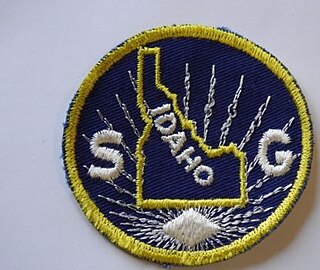
The Idaho State Guard, formerly known as the Idaho Home Guard, is the inactive state defense force of Idaho. The Idaho State Guard was created to replace the Idaho National Guard as a stateside homeland security force while the National Guard was in federal service. A recent attempt at reactivation is being led by the Idaho State Guard Association 2016
The Detroit Light Guard is a military formation in the United States Army, Michigan Army National Guard that has served in many functions since its creation in 1830, including state duties, and even overseas combat. It is survived today in the US Army's 1225th Corps Support Battalion. The Light Guard's nickname, the "Tigers," is the origin of the name of the Detroit Tigers baseball team.















